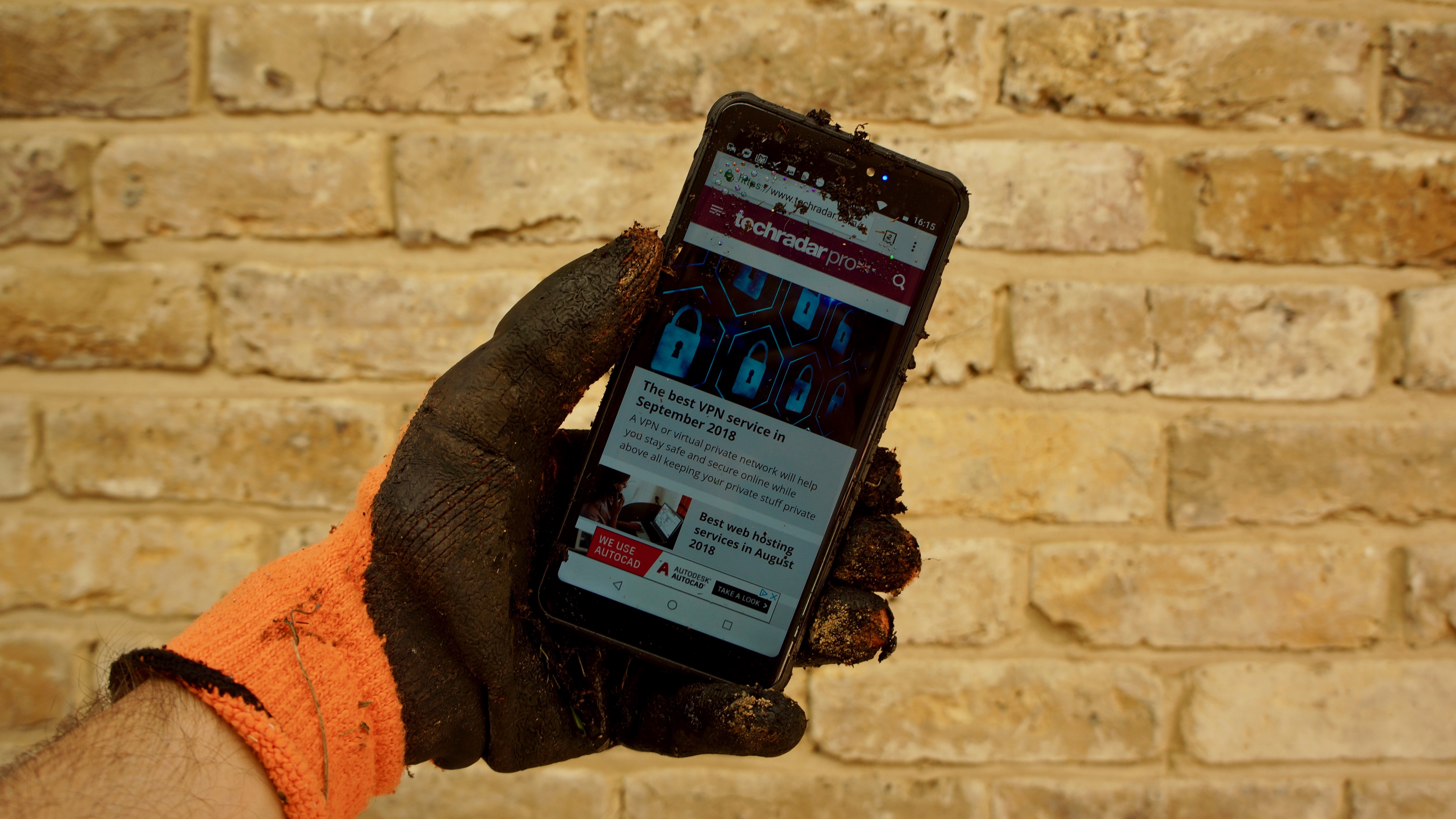TechRadar Verdict
Slim but tough with a long 5.5-inch screen, the Poptel P10 can take the knocks and proved itself useful on a waterlogged building site.
Pros
- +
Rugged, yet compact
- +
Decent memory and CPU performance
- +
Side button enables instant photography
- +
Great value for money
Cons
- -
Fingerprint reader is frustrating
- -
Low screen resolution
- -
Battery could be bigger
- -
No wireless charging, or Face ID
Why you can trust TechRadar
Online Chinese retailer, Gearbest, sent us the sample and sells the Poptel P10 for $260 at the time of writing. Note that, while this price includes delivery, it is exclusive of any taxes that may be levied by HMRC or the courier companies on behalf of the vendor. Want to buy tech from online Chinese retailers? Read this first.
The follow up phone to Poptel’s impressive P9000 Max is another rugged number, and amazingly, it’s even more affordable. Indeed, it is one of the cheapest IP68-rated handset we have come across with this set of components. Although the screen size is the same at 5.5-inches, its dimensions are smaller and the specifications are a step down too.
The P10’s battery is less than half the capacity of Poptel’s flagship phone, for example, but by bringing the price down even further, it could be just the thing for anyone who works in a particularly phone-unfriendly environment. We’re thinking of building sites, fishing boats and anywhere that a phone could get lost or broken in the line of duty.
With its reinforced polycarbonate case, a fairly decent battery and features like a hard button for instant gloves-on access to the camera, it certainly seems to have all the hallmarks of a rugged phone, but without the premium price tag.

Design
Rugged phones tend to be a bit chunkier than your average handset, but that’s not the case here. The Poptel P10 is only 12mm thick and there’s only just enough of a bezel around the 5.5-inch screen to protect it. The 18:9 aspect ratio makes it a narrower than the P9000 Max, which has a 16:9 5.5-inch screen. The case is a shock-resistant combination of rubber and metal with textured plastic covering the rear panel and it comes in three colours: grey, blue and high-visibility orange.

The metal side panels could be unscrewed using a tiny precision Torx screwdriver, but we wouldn’t recommend it and there’s no screwdriver in the box. On one side panel you have the on-off switch and volume rocker and on the other is the SIM slot that can actually take two nano SIMs and a microSD card. There’s also a function button that fires up the camera and activates the shutter button without having to unlock the phone, which is really useful if you are in a hazardous situation, or wearing gloves.

The micro USB port and headphone jack are hidden behind waterproof flaps at the bottom edge of the phone and on the back you can see the camera, flash/torch and fingerprint reader. With this being a budget model, there’s no double lens, or heart rate monitor and that fingerprint reader is not very good at reading fingerprints.

Specifications
Here are the full specs of the Poptel P10:
CPU: ARM MT6763V
GPU: ARM Mali-G71 MP2
RAM: 4GB
Storage: 64GB
Screen size: 5.5-inch
Resolution: 1280 x 640
Weight: 205g
Dimensions: 155 x 75 x 12mm
Rear camera: 13MP
Front camera: 8MP
OS: Android 8.1.0
Battery: 3.6Ah
For a budget handset, the Poptel P10 is quite well specified with plenty of memory headroom and enough processor power to notch up respectable scores in our various bench tests. It’s certainly enough to run the latest version of Android 8.1 without a hitch. In this case Oreo has been restyled well by Poptel’s skin.
Sign up to the TechRadar Pro newsletter to get all the top news, opinion, features and guidance your business needs to succeed!
The screen is a good size, although the ratio of 18:9 is controversial. While it’s great for scrolling and 3D gaming and makes the device narrower and therefore easier to hold, it’s not a good fit for content made in 16:9. And with a resolution of 1280 x 640, this display is not even HD quality.
The cameras are fairly basic too, with no dual lens arrangement, but the main camera captures surprisingly sharp 13MP images. In terms of features, we really appreciate the function button being assigned to the camera, but it’s a pity there’s no Face ID software for unlocking the phone without using your finger.

Jim has been evaluating printers for more than twenty years and has, to date, written over a hundred reviews for TechRadar Pro. From pocket printers to industrial dye sublimation, Jim has been there, run the tests and printed the t-shirt. His expertise extends to consumables (paper, ink, toner) and his printer buying guides make it easy to compare these essential peripherals.
